Vimy, 1917
First World War
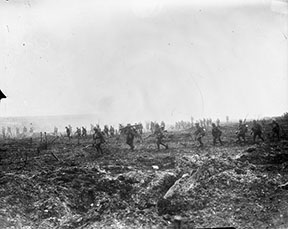
29th Infantry Battalion advancing over "No Man's Land" through the German barbed wire and heavy fire during the Battle of Vimy Ridge. Apr. 1917
W.I. Castle/Canada. Department of National Defence/Library and Archives Canada/PA-001086; Photographer: Castle, William Ivor, 1877-1947.; (MIKAN no. 3233066)
Additional information
This original photo showing the advance on Vimy Ridge, was later retouched by official photographer W.I. Castle for exhibition purposes related to the Canadian War Records Office exhibitions of battle pictures (see Mikan # 3192389 for retouched version). MIKAN no. 3233066
Date
9-14 April 1917
Geographical parameters
Willerval – Maroeuil – Mont St. Eloy – Ablain-St. Nazaire – Liévin-Lens
Context
A battle honour formally entitled the “Battle of Vimy Ridge” and itself being part of “The Battles of Arras, 1917”Footnote 1.
Description
The Honour “Vimy, 1917” was awarded to those units that participated in the taking of this ridge. Although the main effort in taking the ridge was by Canadian units several British units also earned this honour. After months of preparation the Canadian Corps (Lieutenant-General Sir J.H.G. Byng) comprising four Canadian and one British division had the principal task of taking this important geographical feature. The 1st (Major-General A.W. Currie), 2nd (Major-General Sir H.E. Burstall) and 3rd (Major-General L.J. Lipsett) Divisions were able to take their objectives successfully on 9 April 1917 but the 4th Division (Major-General Sir D. Watson), with the highest point of the ridge as its objective, had not been able to push the Germans off of Hill 145. This high point was taken the following day allowing the Canadian Corps to then turn its attention to the capture of the feature known as “The Pimple” on the northern most tip of the ridge. Intentionally left to be taken after Hill 145 it would not be until 12 April that the Canadians carried out their successful attack against this feature. The final phases of the “Battle of Vimy Ridge” consisted of pursuing the German retreat to the east to their new defensive positions between Avion, Arleux-en-Gohelle to Oppy and Gavrelle.

Canadians advancing through German wire entanglements - Vimy Ridge. April, 1917
Credit: Canada. Department of National Defence/Library and Archives Canada/; (MIKAN no. 3404765)
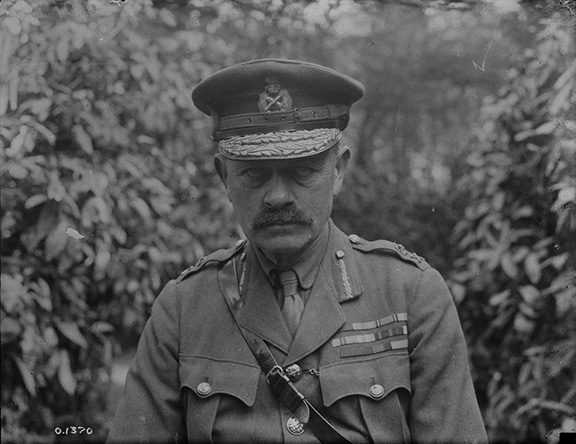
Sir Julian Byng, commanding officer of the Canadian Corps, June 1916-June 1917. Location unknown. May, 1917.
Credit: Canada. Department of National Defence/Library and Archives Canada (MIKAN no.3213526)
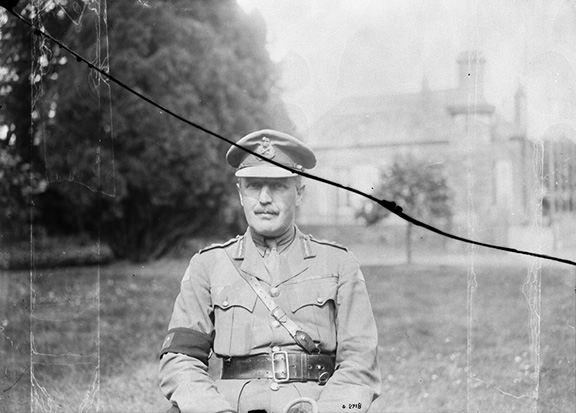
Major-General L.J. Lipsett, commander of the 3rd Canadian Division. Camblain l`Abbé. May, 1918.
Credit: Canada. Department of National Defence/Library and Archives Canada/; (MIKAN no. 3218379)
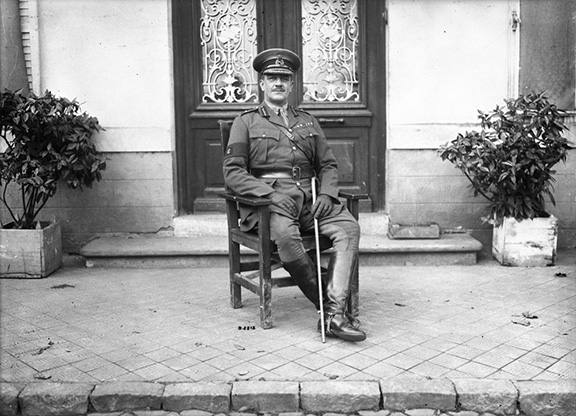
Major-General Sir Henry Edward Burstall was General Officer Commanding the 2nd Canadian Division. Location unknown. December, 1917.
Credit: Canada. Department of National Defence/Library and Archives Canada (MIKAN no. 3213482)
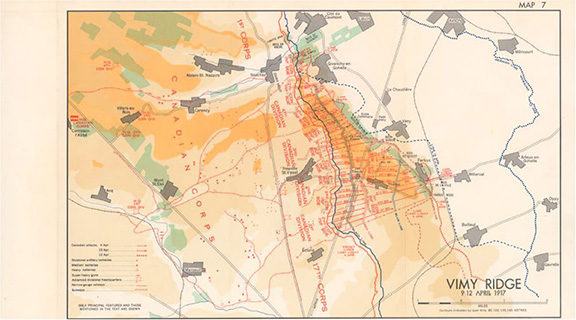
Map of the attack made by the Canadian Corps on Vimy Ridge.
Credit: Map by Nicholson in C.E.F. 1914-1919; p.262.
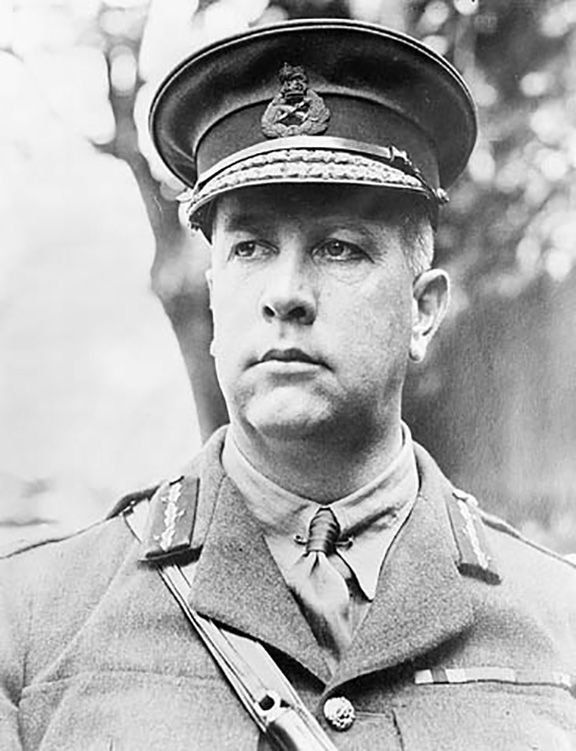
General Currie, Commander of the Canadian troops in France, and A.D.C. Location unknown. June, 1917.
Credit: Canada. Department of National Defence/Library and Archives Canada/PA-001370 (MIKAN no. 3191901)
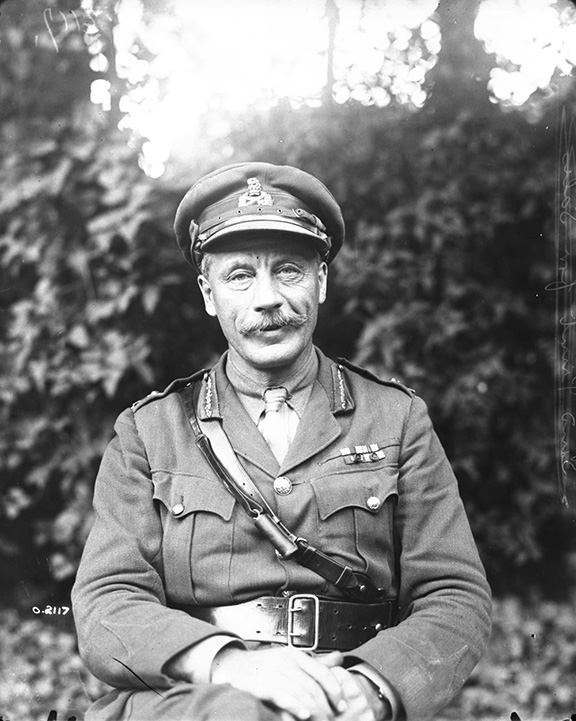
Major-General Watson, the Officer Commanding the 4th Canadian Division. Location unknown. October, 1917.
Credit: Canada. Department of National Defence/Library and Archives Canada (MIKAN no. 3222150)
Awarded to:
Currently Serving Units
- 1st Hussars
Award to the 1st Hussars (GO 71/30) - 48th Highlanders of Canada
Awards to the 15th Canadian Infantry Battalion, CEF (GO 110/29) and The 48th Regiment (Highlanders) (GO 110/29) - 56th Field Artillery Regiment, RCA
Awards to the 4th Canadian Infantry Battalion, CEF (GO 110/29) and The Dufferin Rifles of Canada (GO 110/29) - The Argyll and Sutherland Highlanders of Canada (Princess Louise's)
Awards to the 19th Canadian Infantry Battalion, CEF (GO 110/29) and The Argyll and Sutherland Highlanders of Canada (Princess Louise's) (GO 110/29) - The Black Watch (Royal Highland Regiment) of Canada
Awards to the 13th Canadian Infantry Battalion, CEF (GO 110/29), the 42nd Canadian Infantry Battalion, CEF (GO 110/29), the 73rd Canadian Infantry Battalion, CEF (GO 110/29), and The Royal Highlanders of Canada (GO 110/29) - The British Columbia Dragoons
Awards to the 2nd Canadian Mounted Rifles Battalion, CEF (GO 110/29) and The British Columbia Dragoons (GO 110/29) - The British Columbia Regiment (Duke of Connaught's Own)
Awards to the 10th Canadian Infantry Battalion, CEF (GO 123/29) and The Calgary Highlanders (GO 110/29) - The Calgary Highlanders
Awards to the 10th Canadian Infantry Battalion, CEF (GO 123/29) and The Calgary Highlanders (GO 110/29) - The Cameron Highlanders of Ottawa
Awards to the 38th Canadian Infantry Battalion, CEF (GO 123/29) and The Ottawa Highlanders (GO 110/29) - The Canadian Grenadier Guards
Awards to the 87th Canadian Infantry Battalion, CEF (GO 110/29) and The Canadian Grenadier Guards (GO 110/29) - The Canadian Scottish Regiment (Princess Mary's)
Awards to the 16th Canadian Infantry Battalion, CEF (GO 110/29), the 3rd Pioneer Battalion (48th Canadians), CEF (GO 110/29), the 67th Canadian (Pioneer) Battalion, CEF (GO 123/29), and The Canadian Scottish Regiment (GO 110/29) - The Cape Breton Highlanders
Awards to the 85th Canadian Infantry Battalion, CEF (GO 110/29) and The Cape Breton Highlanders (GO 110/29) - The Essex and Kent Scottish
Awards to the 18th Canadian Infantry Battalion, CEF (GO 110/29) and The Essex Scottish (GO 110/29) - Governor General's Foot Guards
Awards to the 2nd Canadian Infantry Battalion, CEF (GO 123/29) and The Governor General's Foot Guards (GO 32/32) - The Governor General's Horse Guards
Awards to the 4th Canadian Mounted Rifles Battalion, CEF (GO 110/29), The Governor General's Body Guard (GO 112/35) and The Mississauga Horse (GO 110/29) - The King's Own Calgary Regiment (RCAC)
Awards to the 50th Canadian Infantry Battalion, CEF (GO 110/29) and The Calgary Regiment (GO 110/29) - The Lake Superior Scottish Regiment
Awards to the 52nd Canadian Infantry Battalion, CEF (GO 123/29) and The Lake Superior Regiment (GO 110/29) - The Loyal Edmonton Regiment (4th Battalion, Princess Patricia's Canadian Light Infantry)
Awards to the 1st Canadian Mounted Rifles Battalion, CEF (GO 110/29), the 5th Canadian Infantry Battalion, CEF (GO 110/29), the 16th Canadian Light Horse (GO 110/29), The Saskatchewan Mounted Rifles (GO 110/29), and The Saskatoon Light Infantry (GO 110/29) - The North Saskatchewan Regiment
Awards to the 1st Canadian Mounted Rifles Battalion, CEF (GO 110/29), the 5th Canadian Infantry Battalion, CEF (GO 110/29), the 16th Canadian Light Horse (GO 110/29), The Saskatchewan Mounted Rifles (GO 110/29), and The Saskatoon Light Infantry (GO 110/29) - The Nova Scotia Highlanders
Awards to the 25th Canadian Infantry Battalion, CEF (GO 123/29) and The Colchester and Hants Regiment (GO 110/29) - The Ontario Regiment (RCAC)
Awards to the 116th Canadian Infantry Battalion, CEF (GO 110/29) and The Ontario Regiment (GO 123/29) - The Princess of Wales' Own Regiment
Awards to the 21st Canadian Infantry Battalion, CEF (GO 123/29) and The Princess of Wales' Own Regiment (GO 110/29) - Princess Patricia's Canadian Light Infantry
Award to Princess Patricia's Canadian Light Infantry (GO 123/29) - The Queen's Own Cameron Highlanders of Canada
Awards to the 43rd Canadian Infantry Battalion, CEF (GO 110/29) and The Queen's Own Cameron Highlanders of Canada (GO 110/29) - The Queen's Own Rifles of Canada
Awards to the 3rd Canadian Infantry Battalion, CEF (GO 123/29) and The Queen's Own Rifles of Canada (GO 110/29) - The Queen's York Rangers (1st American Regiment) (RCAC)
Awards to the 20th Canadian Infantry Battalion, CEF (GO 110/29) and The Queen's Rangers, 1st American Regiment (GO 110/29) - Royal 22e Régiment
Award to the Royal 22e Régiment (GO 110/29) - The Royal Canadian Hussars (Montreal)
Awards to the 1st Canadian Motor Machine Gun Brigade, CEF (GO 110/29) and the 1st Motor Machine Gun Brigade (GO 110/29) - The Royal Canadian Regiment
Awards to the 1st Canadian Infantry Battalion, CEF (GO 110/29), The Royal Canadian Regiment (GO 110/29), and The Canadian Fusiliers (City of London Regiment) (GO 110/29) - The Royal Hamilton Light Infantry (Wentworth Regiment)
Awards to the 4th Canadian Infantry Battalion, CEF (GO 110/29) and The Royal Hamilton Light Infantry (GO 110/29) - The Royal Montreal Regiment
Awards to the 14th Canadian Infantry Battalion, CEF (GO 110/29) and The Royal Montreal Regiment (GO 110/29) - The Royal New Brunswick Regiment
Awards to the 26th Canadian Infantry Battalion, CEF (GO 110/29), The Carleton Light Infantry (GO 110/29), and The Saint John Fusiliers (GO 110/29) - The Royal Regiment of Canada
Awards to the 3rd Canadian Infantry Battalion, CEF (GO 123/29), the 58th Canadian Infantry Battalion, CEF (GO 110/29), the 123rd Canadian Pioneer Battalion, CEF (GO 123/29), the 124th Canadian Pioneer Battalion, CEF (GO 123/29), The Royal Grenadiers (GO 110/29), and The Toronto Regiment (GO 110/29) - The Royal Regina Rifles
Awards to the 28th Canadian Infantry Battalion, CEF (GO 110/29) and The Regina Rifle Regiment (GO 110/29) - The Royal Westminster Regiment
Awards to the 47th Canadian Infantry Battalion, CEF (GO 110/29) and The Westminster Regiment (GO 110/29) - The Royal Winnipeg Rifles
Awards to the 8th Canadian Infantry Battalion, CEF (GO 110/29), the 10th Canadian Infantry Battalion, CEF (GO 123/29), the 27th Canadian Infantry Battalion, CEF (GO 123/29), the 44th Canadian Infantry Battalion, CEF (GO 110/29), The Winnipeg Rifles (GO 110/29) and The Winnipeg Light Infantry (GO 110/29) - The Saskatchewan Dragoons
Awards to the 46th Canadian Infantry Battalion, CEF (GO 110/29) and The King's Own Rifles of Canada (GO 110/29) - The Seaforth Highlanders of Canada
Awards to the 72nd Canadian Infantry Battalion, CEF (GO 5/31) and The Seaforth Highlanders of Canada (GO 5/31) - The Sherbrooke Hussars
Awards to the 5th Canadian Mounted Rifles Battalion, CEF (GO 110/29) and the 7th/11th Hussars (GO 10/39) - The South Alberta Light Horse
Awards to the 31st Canadian Infantry Battalion, CEF (GO 110/29), The South Alberta Regiment (GO 110/29), and the 19th Alberta Dragoons (GO 71/30) - The Toronto Scottish Regiment (Queen Elizabeth The Queen Mother's Own)
Awards to the 75th Canadian Infantry Battalion, CEF (GO 110/29) and The Toronto Scottish Regiment (GO 110/29)
Units on the Supplementary Order of Battle
- 24th Field Artillery Regiment, RCA
Awards to the 54th Canadian Infantry Battalion, CEF (GO 110/29) and The Kootenay Regiment (GO 110/29) - 27th Field Artillery Regiment, RCA
Award to The Eastern Townships Mounted Rifles (GO 110/29) - 50th Field Artillery Regiment (The Prince of Wales' Rangers), RCA
Awards to the 2nd Canadian Infantry Battalion, CEF (GO 123/29) and The Peterborough Rangers (GO 110/29) - 118th Medium Battery, RCA
Awards to the 1st Canadian Mounted Rifles Battalion, CEF (GO 110/29) and The Manitoba Mounted Rifles (GO 5/31) - Victoria Rifles of Canada
Awards to the 24th Canadian Infantry Battalion, CEF (GO 110/29), the 60th Canadian Infantry Battalion, CEF (GO 110/29) and The Victoria Rifles of Canada (GO 110/29) - The Winnipeg Grenadiers
Awards to the 78th Canadian Infantry Battalion, CEF (GO 110/29) and The Winnipeg Grenadiers (GO 110/29)
Disbanded Units
- 2nd Canadian Pioneer Battalion, CEF
Award to the 2nd Canadian Pioneer Battalion, CEF (GO 123/29) - 107th Canadian Pioneer Battalion, CEF
Award to the 107th Canadian Pioneer Battalion, CEF (GO 123/29) - The Manitoba Regiment
Award to The Manitoba Regiment (GO 123/29) - The North Alberta Regiment
Awards to the 31st Canadian Infantry Battalion, CEF (GO 110/29) and The North Alberta Regiment (GO 110/29)